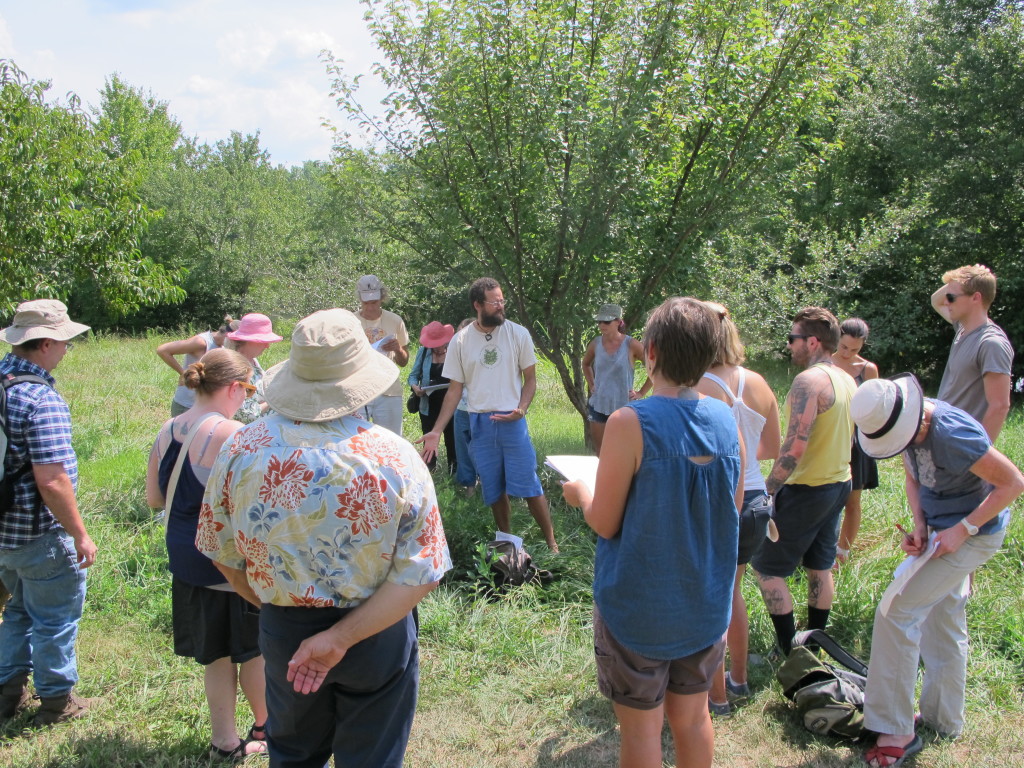
The weekend of August 14 found Marc and I at Pickard’s Mountain Eco-Institute, a teaching and retreat center in the Chapel Hill area. In addition to the teaching facilities and food production at Pickard’s Mountain, herbs are grown on the property for the Honeysuckle Tea House located at the entrance.
The morning after arriving, I headed over to the Sarah P. Duke Gardens at Duke University. It’s amazing how much easier it is to identify plants when there is a sign telling you what it is. I walked around the Garden of Native Plants noting various plants that could be grown for spices, nuts, food, and teas up through the northeastern United States as the signs gave the plants’ current range. The potential for diversifying farms and landscapes with edible and useful plants is seemingly limitless. I spent the end of my visit noting all of the fern species I could, as it is not often that such a collection is labeled in one place. This seemed fitting as The Garden of Native Plants was made in honor of Professor Hugo L. Blomquist, who literally wrote the book on ferns of the southeast. It was also special to spend time in the gardens where Frank Cook worked at the beginning of his plant journey.
When I returned to Pickard’s Mountain, Marc was in the middle of the plant-walk portion of the Forage and Feast, finding respite from the heat under an apple tree. The walk covered Edlerberry (Sambucus nigra), Horse Nettle (Solanum caroliniense, deadly poisonous), Dandelion (Taraxacum officinale), Eurasian Nettle (Urtica dioica), Shiso (Perilla frutescens), Meadow Beauty (Rhexia sp.), and Chamaecrista sp. (a member of the pea family), among other species. After the plant-walk, it was onto the kitchen.
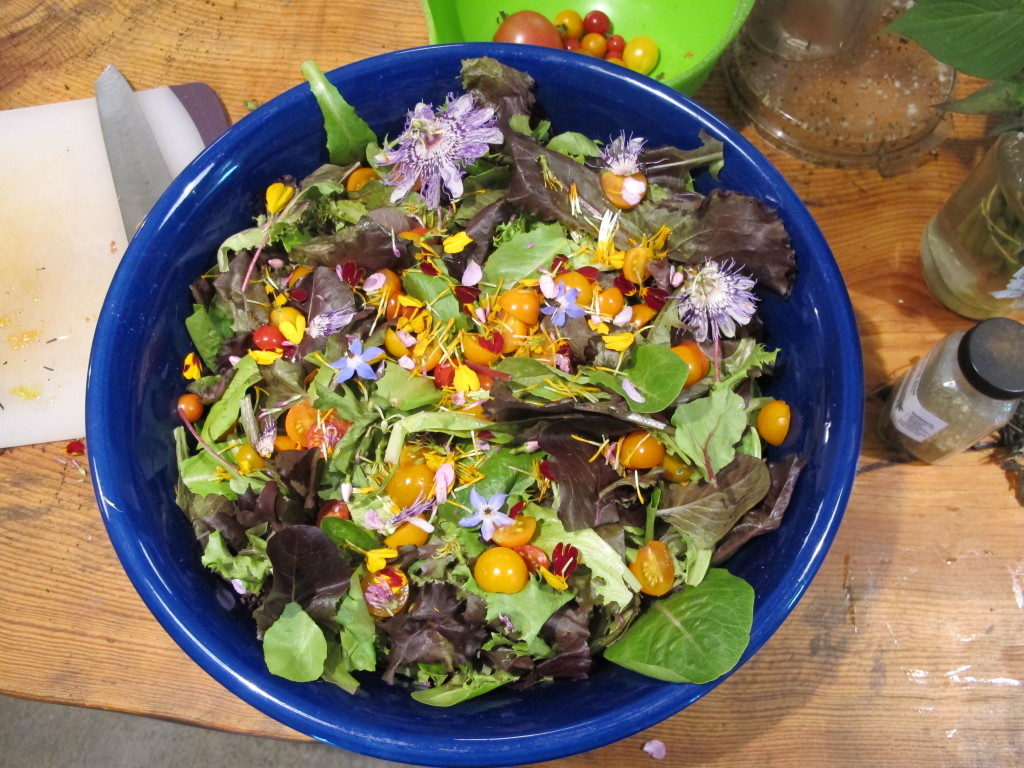
Here, a feast was prepared. Hummus with chickpea miso and carrot tops, and a pesto with basil, sunflower seeds, and pumpkin seeds went well with the carrot and corn chips. A salad prepared with lettuce, passionflower (Passiflora incarnata) flowers, Shiso (Perilla frutescens), lamb’s quarter (Chenopodium album), and dandelion (Taraxacum officinale) was a thrill for the eyes and mouth. We also brewed up a tea of Beebalm (Monarda sp.), mint (Menth sp.), Chagga mushroom (Inonotus obliquus) and other tasty items.
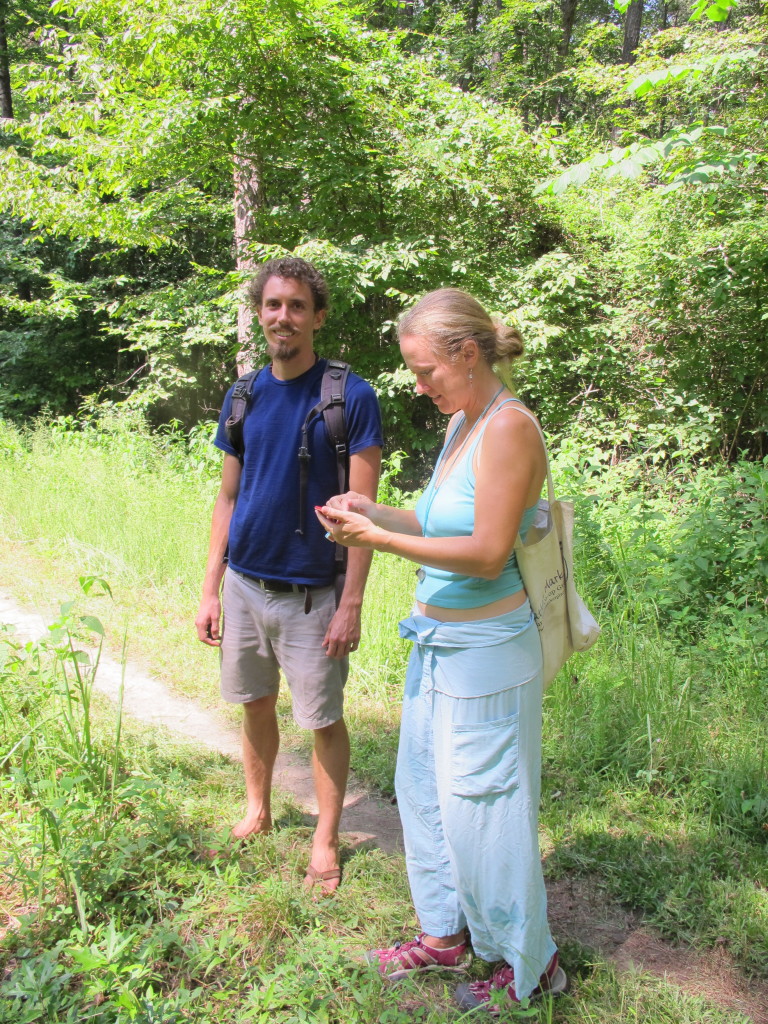
Sunday, before Marc’s fermentation class, we met up with his friend Kim Calhoun at the North Carolina Botanical Garden at Chapel Hill. Unfortunately, the garden was closed until noon. Instead, Kim took us on a tour of the grounds around the Garden. Here we geeked out on some of the bark differences between oaks and hickories (including a dance made up by Kim to help remember), found a possible escaped plant none of us had seen naturalized in the woods, and learned that we should explore the edibility of Aralia spinosa (Devil’s Walking Stick or Hercules Club) a bit more.
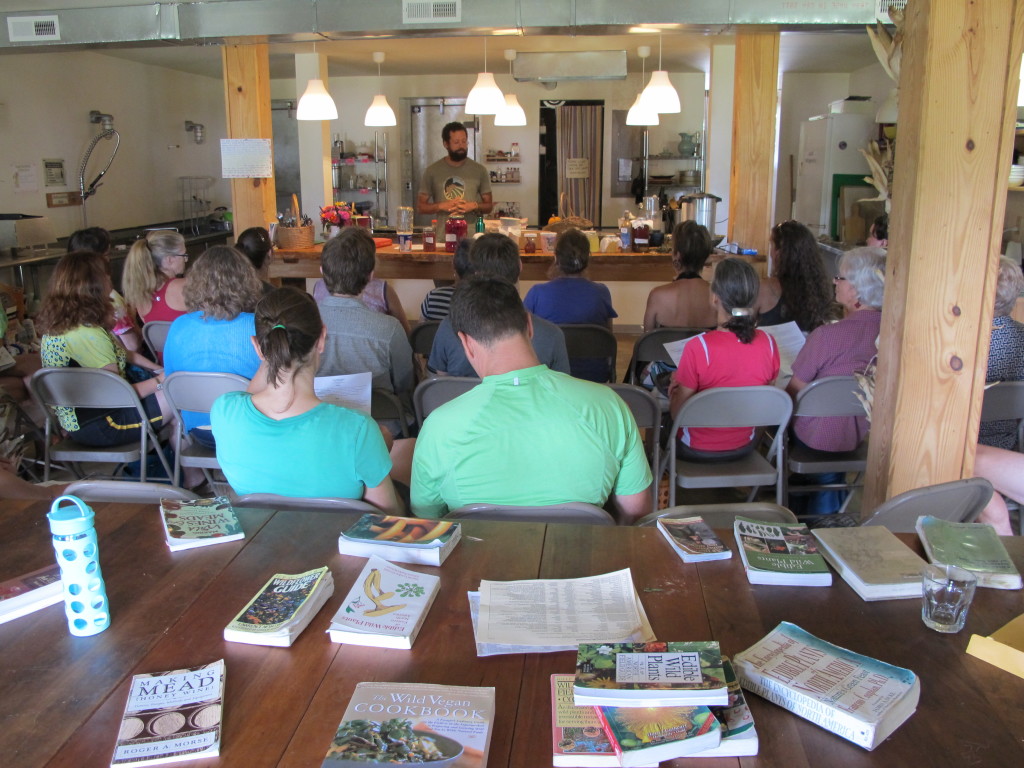
After our tour with Kim, Marc offered a extensive class on the wonders of fermented foods. He covered saurkraut, kimchi, idli, dosas, sourdough, mead, vinegar, kombucha, jun, Gu-no-he-nv (if you want to know what that is, come to one of Marc’s classes or check out Sandor Katz’s Wild Fermentation), and homemade soda. After elucidating each of these wonderful fermented comestibles, plus adaptogens, bitters, stimulants, adrenal aids, diuretics, stories and cultural histories of fermented foods, and much more, it was time to taste some of the examples Marc and others had crafted. These included most of the afforementioned products, plus Greek yogurt, cheese, and seed cheese Marc had made. Normally, fermented foods would be an addition to a meal, not compose the whole meal, but an exception was made considering this was a workshop on fermented foods.
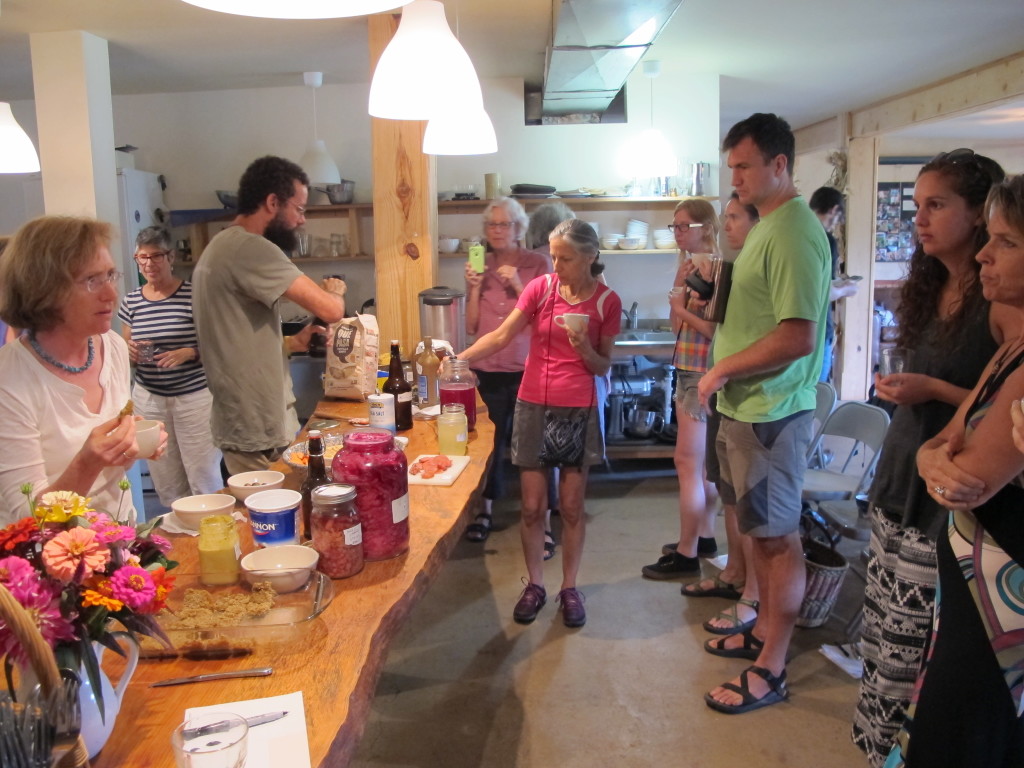
I am amazed at how much new information I pick up at each one of Marc’s classes. The weekend at Pickard’s Mountain was a good reminder that there is always something new to learn, even if you’ve been to the same class multiple times. Luckily, Marc will be back in Pickard’s Mountain teaching a similar weekend but with fall plants! It will certainly be a wonderful opportunity to learn about the plants we live with!
By: Hayden Stebbins